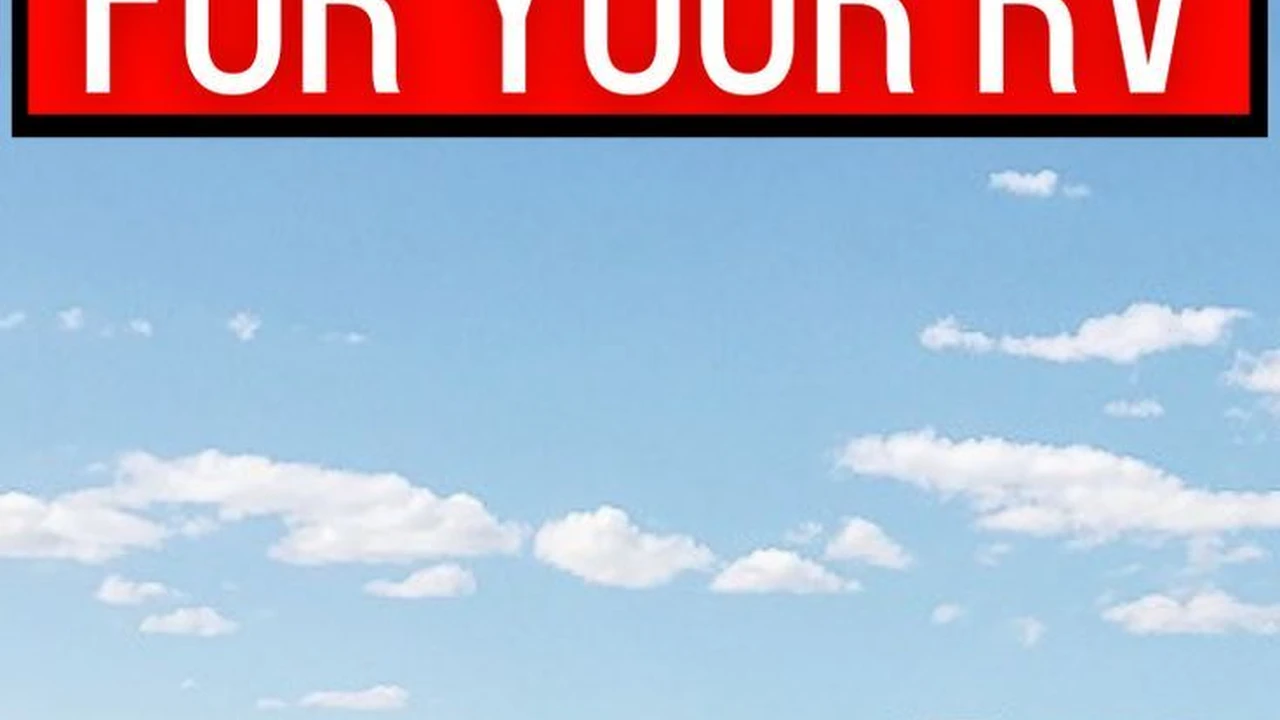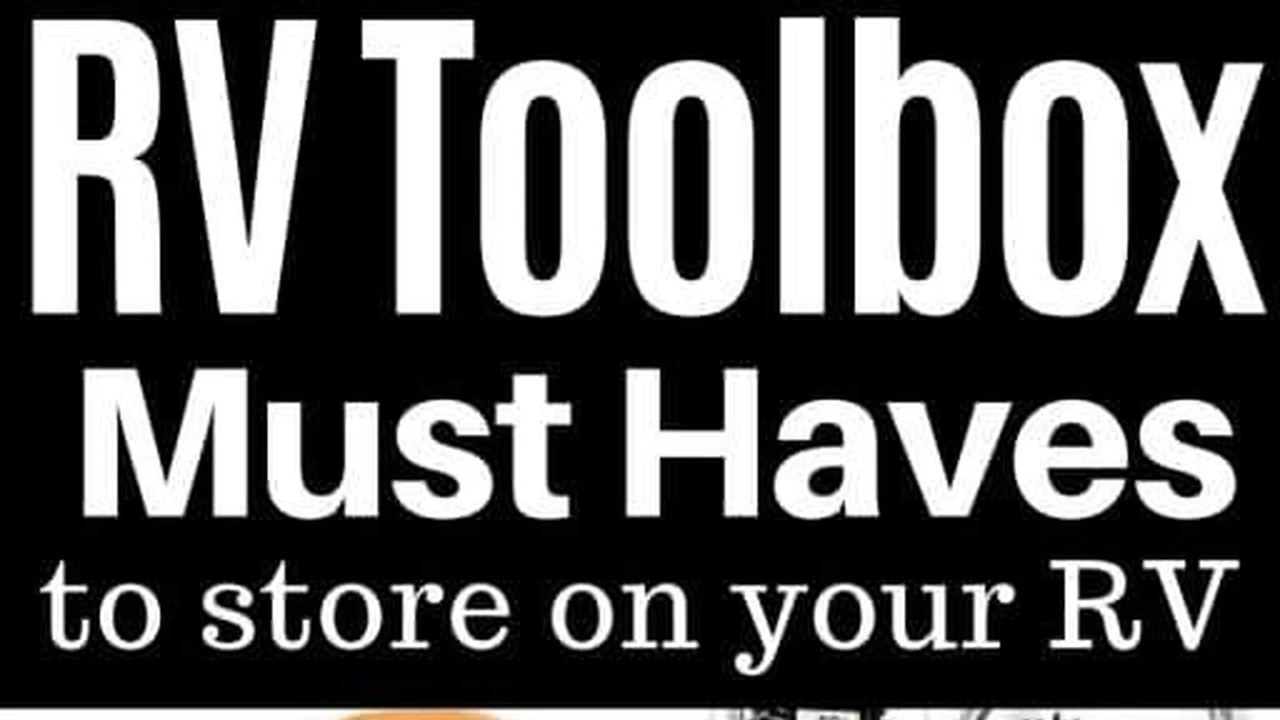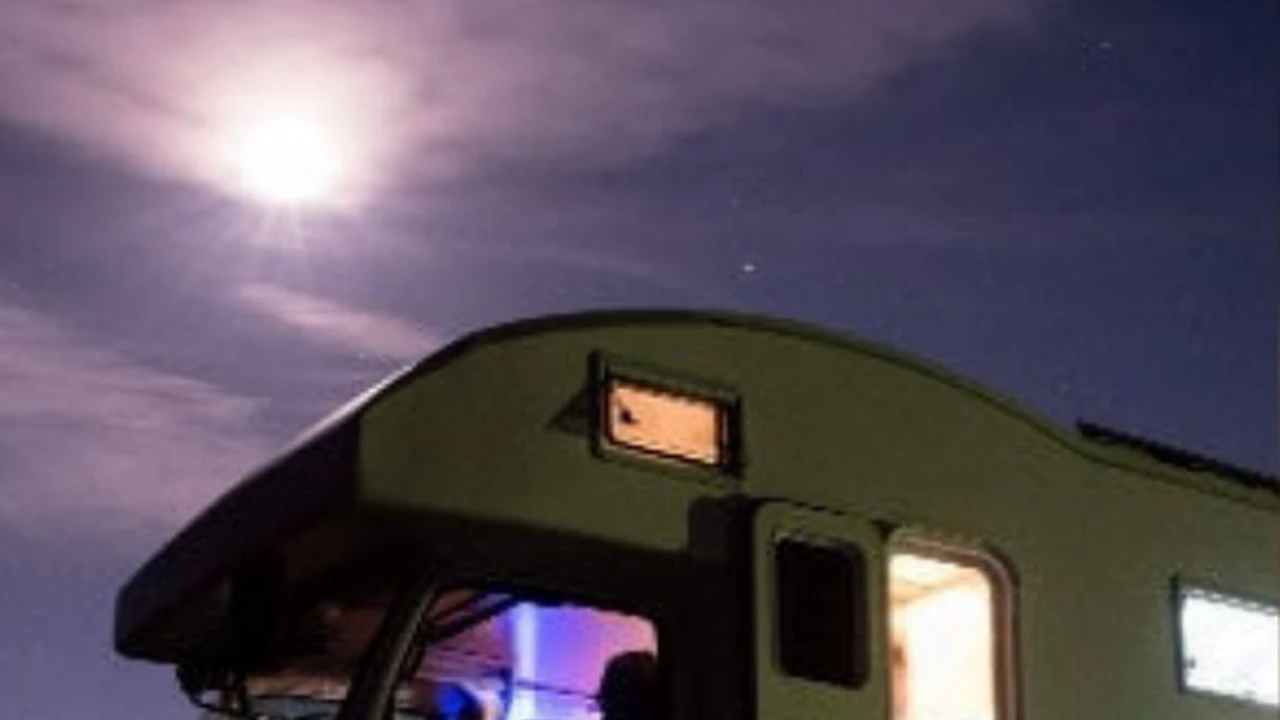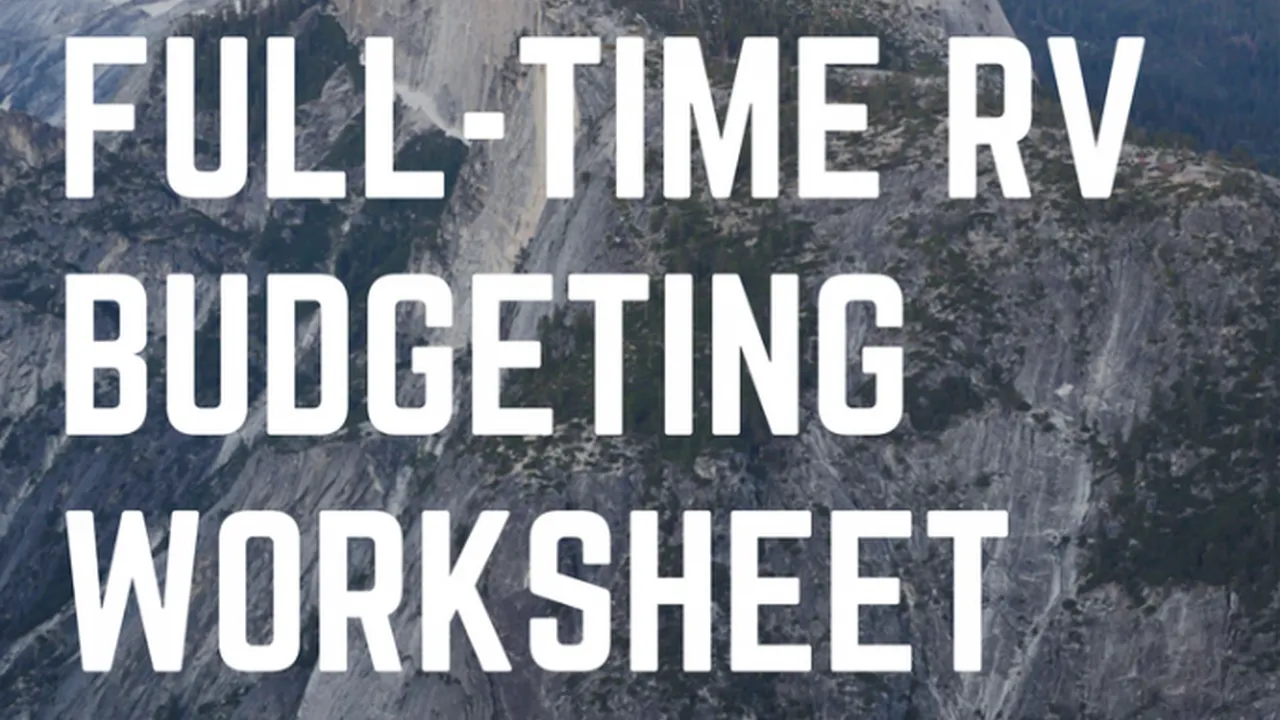Best RV Trip Planning Apps for California

Planning Your Dream California RV Adventure An Introduction
California, with its diverse landscapes ranging from stunning coastlines to towering redwood forests and majestic mountains, is a dream destination for RV travelers. The freedom of the open road, the ability to wake up to breathtaking views, and the flexibility to explore at your own pace make RVing in California an unforgettable experience. But before you hit the road, careful planning is essential to ensure a smooth, enjoyable, and safe journey. This comprehensive guide will walk you through every step of planning your California RV adventure, from choosing the right RV to selecting the perfect campgrounds and activities.
Choosing The Perfect RV For Your California Road Trip Needs
The first step in planning your RV trip is selecting the right RV. This depends on several factors, including your budget, the size of your travel party, and your comfort level. Here's a breakdown of the different types of RVs available:
- Class A RVs: These are the largest and most luxurious RVs, resembling buses. They offer plenty of space and amenities, making them ideal for long trips with larger groups. However, they are also the most expensive and can be difficult to maneuver in tight spaces.
- Class B RVs (Camper Vans): These are smaller and more agile than Class A RVs, built on van chassis. They are easier to drive and park, making them a good option for solo travelers or couples who want to explore more remote areas. However, they offer less space and fewer amenities.
- Class C RVs: These RVs are a compromise between Class A and Class B RVs. They are built on truck chassis and feature an over-cab sleeping area. They offer a good balance of space, amenities, and maneuverability.
- Travel Trailers: These are towed behind a truck or SUV. They are more affordable than motorized RVs and offer a wide range of sizes and floor plans. However, they require a vehicle with sufficient towing capacity and can be challenging to maneuver.
- Fifth Wheel Trailers: These are larger and more luxurious than travel trailers, designed to be towed by a pickup truck with a special fifth-wheel hitch. They offer plenty of space and amenities, but require a powerful truck and can be difficult to maneuver.
Recommendation: For families or groups needing space and comfort, a Class A or larger Class C RV might be ideal. For couples or solo travelers seeking maneuverability and access to smaller campgrounds, a Class B or smaller Class C RV is a better choice. Travel trailers offer a budget-friendly option, but require careful consideration of towing capacity and driving skills.
Budgeting Your California RV Vacation Costs And Savings
RV travel can be an affordable way to see California, but it's important to budget carefully. Here are some of the key costs to consider:
- RV Rental or Purchase: This is the biggest expense. Rental costs vary depending on the size and type of RV, the time of year, and the rental company. Purchasing an RV is a significant investment, but it can save you money in the long run if you plan to travel frequently.
- Fuel: RVs consume a lot of fuel. Calculate your estimated fuel costs based on the distance you plan to travel and the RV's fuel efficiency.
- Campground Fees: Campground fees vary depending on the location, amenities, and time of year. Expect to pay anywhere from $20 to $80 per night.
- Food and Drinks: You can save money by cooking your own meals in the RV. Plan your meals in advance and stock up on groceries before you leave.
- Activities and Attractions: Factor in the cost of entrance fees to national parks, museums, and other attractions.
- Insurance: Make sure you have adequate RV insurance coverage.
- Maintenance and Repairs: RVs require regular maintenance and occasional repairs. Set aside a budget for these expenses.
Example: A family of four traveling in a Class C RV for two weeks could expect to spend approximately $3,000 to $6,000, depending on their spending habits and the type of campgrounds they choose. This includes rental costs, fuel, campground fees, food, and activities.
Choosing The Best California RV Campgrounds And Parks
California offers a wide range of RV campgrounds, from rustic campsites in national forests to luxurious resorts with all the amenities. Here are some of the most popular options:
- National Parks: Yosemite, Sequoia & Kings Canyon, Death Valley, and Redwood National Parks offer stunning scenery and excellent hiking opportunities. However, campsites in national parks are often booked months in advance, so plan accordingly.
- State Parks: California State Parks offer a variety of camping experiences, from coastal campgrounds to mountain retreats. They are generally less crowded than national parks and offer a wider range of amenities.
- Private RV Parks: Private RV parks offer a variety of amenities, such as swimming pools, hot tubs, laundry facilities, and Wi-Fi. They are often more expensive than national and state park campgrounds, but they offer a more comfortable and convenient experience. Examples include KOA campgrounds.
- Boondocking (Dry Camping): Boondocking is camping without hookups (water, electricity, and sewer). It's a great way to save money and experience the wilderness, but it requires careful planning and preparation. Many National Forest lands allow for dispersed camping.
Recommendation: For a classic California experience, prioritize campgrounds within or near National and State Parks. Book well in advance! For convenience and amenities, consider private RV parks, especially if traveling with children. Boondocking offers the most adventurous (and cost-effective) option, but requires self-sufficiency.
Essential RV Equipment And Supplies For California Travel
Before you hit the road, make sure you have all the essential RV equipment and supplies. Here's a checklist:
- RV Leveling Blocks: These are used to level your RV on uneven terrain.
- Wheel Chocks: These prevent your RV from rolling.
- Water Hose and Filter: A water hose is used to connect your RV to a water source. A water filter will remove impurities from the water.
- Sewer Hose: A sewer hose is used to empty your RV's waste tanks.
- Electrical Adapter: An electrical adapter allows you to connect your RV to different types of power outlets.
- First-Aid Kit: A well-stocked first-aid kit is essential for any RV trip.
- Tools: A basic tool kit can help you make minor repairs on the road.
- Navigation System: A GPS or smartphone with a navigation app is essential for finding your way.
- Emergency Kit: An emergency kit should include items such as jumper cables, a flashlight, a blanket, and food and water.
Specific Product Recommendation: Consider a portable RV water softener. California water can be hard, leading to mineral buildup in your RV's plumbing. A softener can extend the life of your appliances and improve water quality.
Planning Your California RV Route And Itinerary Must See Stops
California offers a plethora of scenic routes and must-see destinations. Here are a few popular options:
- Pacific Coast Highway (Highway 1): This iconic highway hugs the California coastline, offering stunning views of the Pacific Ocean. Highlights include Big Sur, Monterey, and Carmel-by-the-Sea. Be aware that sections of Highway 1 can be closed due to landslides, so check conditions before you go.
- Yosemite National Park: This world-renowned park is famous for its towering granite cliffs, giant sequoia trees, and stunning waterfalls. Popular activities include hiking, camping, and rock climbing.
- Death Valley National Park: This extreme desert landscape is home to the lowest point in North America. It's a unique and unforgettable experience, but be prepared for extreme heat, especially during the summer months.
- Redwood National and State Parks: These parks protect some of the tallest trees on Earth. Hike among these giants and marvel at their scale.
- Lake Tahoe: This stunning alpine lake offers a variety of recreational activities, such as swimming, boating, and hiking.
Example Itinerary (10 Days):
- Day 1: Arrive in San Francisco, pick up RV, and drive south to Half Moon Bay.
- Day 2: Drive down Highway 1 to Monterey and visit the Monterey Bay Aquarium.
- Day 3: Explore Big Sur, stopping at iconic viewpoints like Bixby Bridge.
- Day 4: Continue south on Highway 1 to San Simeon and visit Hearst Castle.
- Day 5: Drive inland to Yosemite National Park.
- Day 6: Explore Yosemite Valley, hiking to waterfalls and viewpoints.
- Day 7: Drive to Mammoth Lakes and explore the Eastern Sierra.
- Day 8: Visit Mono Lake and explore the volcanic landscapes.
- Day 9: Drive back towards the coast, stopping in a charming town like Sonora.
- Day 10: Return to San Francisco and drop off RV.
Staying Safe On California Roads RV Driving Tips
Driving an RV requires different skills and considerations than driving a car. Here are some safety tips:
- Practice: Before your trip, practice driving your RV in a safe and open area. Get comfortable with its size and handling.
- Plan Your Route: Avoid narrow roads, low bridges, and steep grades. Use an RV-specific GPS app to plan your route.
- Drive Slowly: RVs have a higher center of gravity than cars, so they are more prone to rollovers. Drive slowly and cautiously, especially on curves and in windy conditions.
- Be Aware of Your Height and Weight: Pay attention to posted height and weight restrictions.
- Check Your Tires: Before each trip, check your tire pressure and condition.
- Use Your Mirrors: RVs have large blind spots. Use your mirrors frequently and be aware of your surroundings.
- Take Breaks: Driving an RV can be tiring. Take frequent breaks to stretch your legs and rest.
- Secure Your Load: Make sure all items inside your RV are properly secured to prevent them from shifting during travel.
Dealing With California Weather Conditions While RVing
California's weather can be unpredictable. Be prepared for a variety of conditions, depending on the time of year and the region you're visiting.
- Summer: Summers in California are hot and dry, especially in the desert regions. Stay hydrated, wear sunscreen, and avoid strenuous activities during the hottest part of the day.
- Winter: Winters in California can be wet and cold, especially in the mountains. Be prepared for snow and ice.
- Spring and Fall: Spring and fall are the best times to visit California, with mild temperatures and fewer crowds. However, be prepared for occasional rain.
- Coastal Areas: Coastal areas can be foggy and cool, even in the summer. Bring layers of clothing.
Specific Consideration: If traveling in the mountains during the winter, carry tire chains and know how to install them. Road closures due to snow are common.
Finding RV Resources And Communities In California
There are many resources available to help you plan your California RV trip. Here are a few:
- RV Clubs: RV clubs offer discounts on campgrounds, insurance, and other RV-related products and services. They also provide opportunities to meet other RVers. Examples include Good Sam Club and Escapees RV Club.
- Online Forums: Online forums are a great place to ask questions, share tips, and connect with other RVers.
- RV Blogs: RV blogs offer a wealth of information on RV travel, including campground reviews, destination guides, and maintenance tips.
- California RV Parks and Campgrounds Association (CalARVC): This association provides a directory of RV parks and campgrounds in California.
California RV Rental Options Comparing Companies And Prices
If you don't own an RV, renting is a great way to experience RV travel. Here are some popular RV rental companies:
- Cruise America: Cruise America is one of the largest RV rental companies in the US, offering a wide range of RVs at competitive prices.
- El Monte RV: El Monte RV is another large RV rental company, known for its well-maintained RVs and excellent customer service.
- RVshare: RVshare is a peer-to-peer RV rental marketplace, connecting RV owners with renters. This can offer more unique RV options and potentially better prices.
- Outdoorsy: Outdoorsy is another peer-to-peer RV rental marketplace, similar to RVshare.
Comparison: Cruise America and El Monte RV offer standardized fleets and established reputations. RVshare and Outdoorsy offer more variety and potentially better deals, but require more research into individual owners and RV conditions.
Pricing: Rental prices vary depending on the size and type of RV, the time of year, and the rental company. Expect to pay anywhere from $100 to $300 per night for a Class C RV, and $200 to $500 per night for a Class A RV. Peer-to-peer rentals can sometimes be found for less, but always verify the condition of the vehicle.
California RV Dump Stations Locations And Etiquette
Knowing where to find RV dump stations is crucial for responsible RV travel. Many campgrounds offer dump stations for registered guests. You can also find dump stations at some truck stops, gas stations, and RV dealerships. Apps like Sanidumps provide comprehensive listings.
Etiquette:
- Wear gloves when handling sewer hoses.
- Rinse the dump station area after use.
- Don't leave anything behind.
- Be patient and courteous to other RVers.
California RV Parks With Full Hookups For Maximum Comfort
Full hookups (water, electricity, and sewer) provide the most comfortable RV camping experience. Many private RV parks and some state parks offer full hookups. These are particularly desirable for longer stays and when traveling with families.
Examples:
- Pismo Coast Village RV Resort: Located on the beach in Pismo Beach, this resort offers full hookups, a swimming pool, and other amenities.
- Golden Village Palms RV Resort: Located in Hemet, this resort offers full hookups, multiple swimming pools, a spa, and a clubhouse.
- KOA Campgrounds: Many KOA campgrounds throughout California offer full hookups.
RVing In California With Pets Tips And Considerations
California is a pet-friendly state, but there are some things to keep in mind when RVing with pets:
- Campground Restrictions: Check campground rules regarding pets. Some campgrounds have breed restrictions or size limits.
- Leash Laws: Keep your pet on a leash at all times, except in designated off-leash areas.
- Heat Safety: Never leave your pet unattended in your RV, especially during hot weather.
- Veterinary Care: Bring your pet's vaccination records and be aware of local veterinary clinics.
- Trail Restrictions: Many trails in national and state parks do not allow pets. Check regulations before you go.
Understanding California RV Laws And Regulations
Familiarize yourself with California's RV laws and regulations before you hit the road:
- Speed Limits: The speed limit for RVs is generally the same as for cars, but may be lower in some areas.
- Towing Regulations: If you are towing a trailer, be aware of California's towing regulations, including weight limits and safety requirements.
- Parking Restrictions: Be aware of parking restrictions for RVs in cities and towns.
- DMV Requirements: Ensure your driver's license is valid and that you meet any special requirements for driving a large RV.
California RV Storage Solutions When You Are Not On The Road
When you're not using your RV, you'll need a place to store it. Here are some options:
- RV Storage Facilities: Many RV storage facilities offer secure and convenient storage options.
- Self-Storage Units: Some self-storage units can accommodate RVs.
- Your Property: If you have enough space, you can store your RV on your own property.
Maintaining Your RV On The Road California Service Centers
Regular RV maintenance is crucial for a safe and enjoyable trip. Here are some tips:
- Regular Inspections: Inspect your RV regularly for any signs of wear and tear.
- Fluid Checks: Check your RV's fluid levels regularly.
- Tire Maintenance: Maintain proper tire pressure and check your tires for wear and tear.
California Service Centers: Research and identify reputable RV service centers along your planned route in case of unexpected repairs.
California RV Travel During Peak Seasons Avoiding Crowds
California is a popular destination, so expect crowds during peak seasons (summer, holidays). Here are some tips for avoiding crowds:
- Travel During the Off-Season: Consider traveling during the spring or fall, when the weather is mild and the crowds are smaller.
- Visit Less Popular Destinations: Explore lesser-known areas of California.
- Book in Advance: Book your campgrounds and activities well in advance.
- Arrive Early: Arrive at popular destinations early in the morning to avoid the crowds.
California RV Clubs And Memberships Joining The Community
Joining an RV club can provide many benefits, including discounts, resources, and opportunities to connect with other RVers. Consider joining clubs like Good Sam or Escapees.
California RV Shows And Events Staying Informed
Attending RV shows and events is a great way to learn about the latest RV models, products, and services. Check online listings for upcoming events in California.
Future Of RV Travel In California Sustainable Practices
As RV travel becomes more popular, it's important to practice sustainable RVing to protect California's natural resources. This includes conserving water, reducing waste, and minimizing your impact on the environment.
RV Insurance California Coverage Options And Requirements
Adequate RV insurance is essential. Compare coverage options from different providers to find the best policy for your needs. Ensure your policy covers liability, collision, and comprehensive damage.
California RV Extended Warranties Protecting Your Investment
Consider purchasing an extended warranty for your RV to protect against unexpected repair costs. Research different warranty providers and compare coverage options.
California RV Financing Options Making Your Dream A Reality
If you're planning to purchase an RV, explore different financing options, such as RV loans from banks, credit unions, and RV dealerships. Compare interest rates and loan terms to find the best deal.
California RV Depreciation Understanding The Value
Be aware that RVs depreciate over time. Research the depreciation rates of different RV models to make informed purchasing decisions.
California RV Resale Value Maximizing Your Return
To maximize your RV's resale value, keep it well-maintained, clean, and in good condition. Keep detailed records of all maintenance and repairs.
:max_bytes(150000):strip_icc()/277019-baked-pork-chops-with-cream-of-mushroom-soup-DDMFS-beauty-4x3-BG-7505-5762b731cf30447d9cbbbbbf387beafa.jpg)






